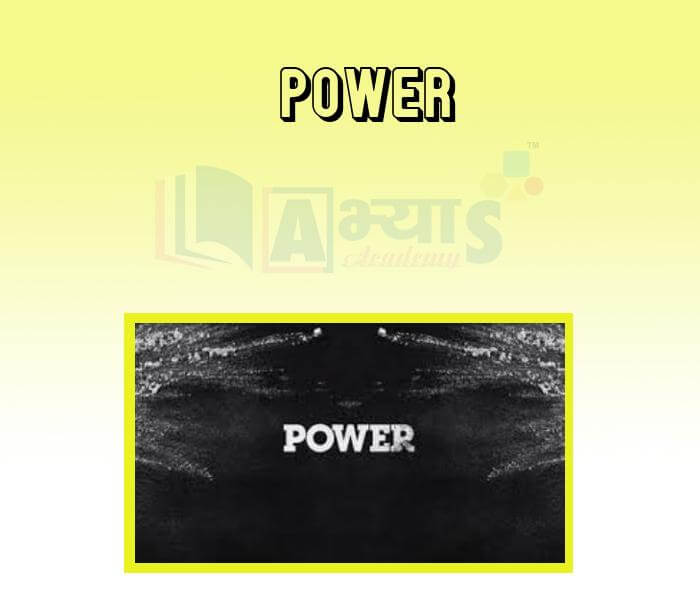Power


Power
Power :Power can be defined as the amount of work done per unit time.
Some examples :
1. You may have noticed that old people find it difficult to climb a flight of stairs quickly. But they can easily climb the same flight of stairs slowly. In both cases they spend the same amount of their stored energy and do the same amount of work in climbing the stairs. But the rate at which energy is spent or work is done is different in the cases.
2. Let us take another example. You can keep your hands immersed in lukewarm water for hours. But you cannot keep them in boiling water the cases. However, the rate at which energy is transferred is different in the two cases. As a result, they have different effects.
We see that in many cases the rate at which work is done or energy is transferred is an important quantity. Hence, this quantity is given a separate name - power. The rate at which work is done by a force is called the power delivered by that force.` Also, the rate at which energy is transferred by an object (like a machine) is called the power delivered by that object.
Definition :
The time rate of doing work is defined as power(P) . If equal works are done in different times, power will be different. More quickly work is done, power will be more.
As work W is measured in joules and time t in seconds, the unit of power is joule/second. This unit is given a separate name - watt. If work is done at the rate of 1 joule per second, the power P delivered is 1 watt (1 watt = 1 joule/second). The symbol of watt is W. Kilowatt (kW) and megawatt (MW) are also commonly used units of power.
Another common unit of power is the horse power. Horse power is written in short as hp. Horse power is related to watt as
1 horse power = 746 watt
The power of a body doing 20 Joles of work in 5 seconds is | |||
| Right Option : D | |||
| View Explanation | |||
If a boy weghing 450 N climbs up a rope through a height of 1m in 1s, what is the power exerted by him? | |||
| Right Option : A | |||
| View Explanation | |||
1 hp is equal to | |||
| Right Option : A | |||
| View Explanation | |||
Students / Parents Reviews [10]
A marvelous experience with Abhyas. I am glad to share that my ward has achieved more than enough at the Ambala ABHYAS centre. Years have passed on and more and more he has gained. May the centre flourish and develop day by day by the grace of God.

Archit Segal
7thAbhyas is a complete education Institute. Here extreme care is taken by teacher with the help of regular exam. Extra classes also conducted by the institute, if the student is weak.

Om Umang
10thMy experience was very good with Abhyas academy. I am studying here from 6th class and I am satisfied by its results in my life. I improved a lot here ahead of school syllabus.

Ayan Ghosh
8thIt was a good experience with Abhyas Academy. I even faced problems in starting but slowly and steadily overcomed. Especially reasoning classes helped me a lot.

Cheshta
10thIt was good as the experience because as we had come here we had been improved in a such envirnment created here.Extra is taught which is beneficial for future.

Eshan Arora
8thAbout Abhyas metholodology the teachers are very nice and hardworking toward students.The Centre Head Mrs Anu Sethi is also a brilliant teacher.Abhyas has taught me how to overcome problems and has always taken my doubts and suppoeted me.

Shreya Shrivastava
8thIt has a great methodology. Students here can get analysis to their test quickly.We can learn easily through PPTs and the testing methods are good. We know that where we have to practice

Barkha Arora
10thBeing a parent, I saw my daughter improvement in her studies by seeing a good result in all day to day compititive exam TMO, NSO, IEO etc and as well as studies. I have got a fruitful result from my daughter.

Prisha Gupta
8thMy experience with Abhyas is very good. I have learnt many things here like vedic maths and reasoning also. Teachers here first take our doubts and then there are assignments to verify our weak points.

Shivam Rana
7thOne of the best institutes to develope a child interest in studies.Provides SST and English knowledge also unlike other institutes. Teachers are co operative and friendly online tests andPPT develope practical knowledge also.
